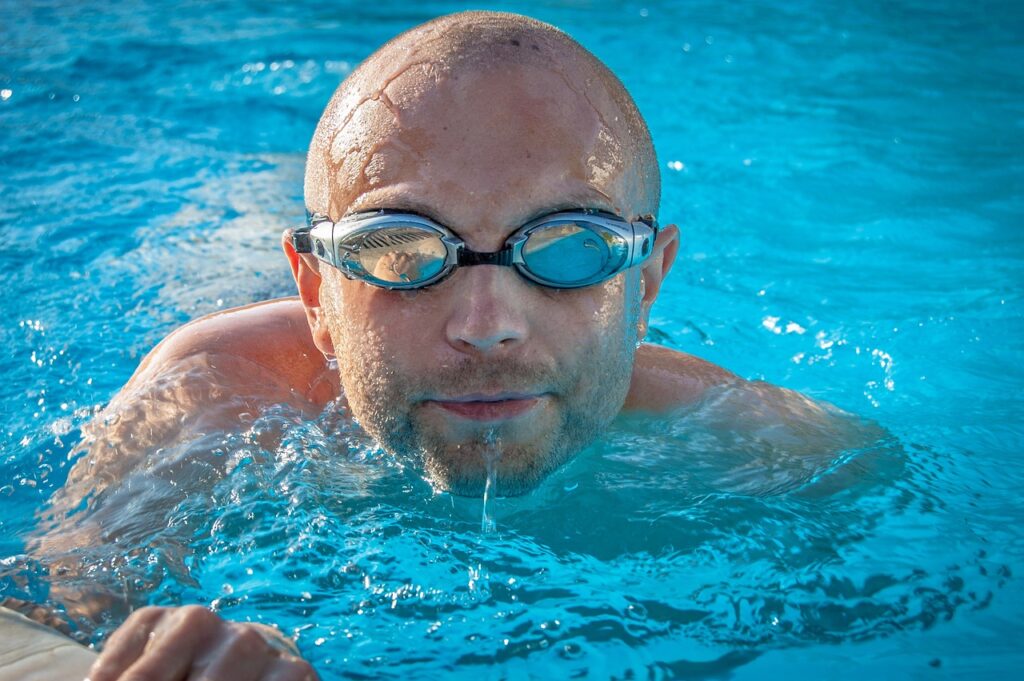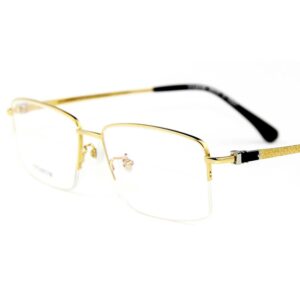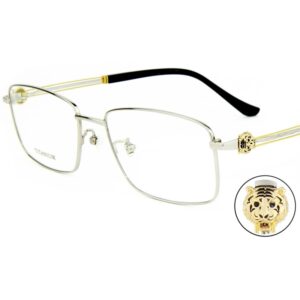In today’s eyewear market, retro-style glasses are becoming increasingly popular. Whether it’s younger or older consumers, many seem captivated by the timeless appeal of classic designs. But the challenge lies in maintaining those retro elements while incorporating modern design concepts and technology, creating eyewear that is both nostalgic and stylish. For designers, this is both a significant challenge and a huge opportunity.
Today, we’re going to discuss how to blend those classic retro elements with modern design to create eyewear that captures the vintage vibe while retaining contemporary appeal.
Identifying and Classifying Classic Retro Elements
To successfully design retro-style eyewear, we first need to understand what makes a design “classic.” After all, mastering these classic elements is essential for effectively incorporating them into a modern design.
Frame Shapes

Retro-style frames come in many iconic shapes, such as the round “John Lennon” frames, the square “Aviator” frames, or the cat-eye “Cat Eye” frames. These shapes not only have deep historical roots but also carry unique symbolic meanings.
| Frame Shape | Historical Background | Symbolism |
|---|---|---|
| Round Frames | Popular in the 1960s counterculture | Nonconformity, self-expression |
| Square Aviator Frames | Originated from military eyewear design | Strength, resilience |
| Cat-Eye Frames | A staple of 1950s women’s fashion | Feminine allure, elegance |
In modern design, directly replicating these classic shapes might seem outdated. Therefore, adjustments are necessary. For instance, slightly enlarging the frame proportions or altering the frame curvature can make them more suitable for today’s consumers.
Material Choices

When it comes to retro eyewear, material selection is crucial. Classic materials like metal (especially copper and brass), acetate, and wood play a significant role in retro designs. These materials provide a warm touch and a vintage visual appeal, making people feel like “this has a story.”
| Material | Characteristics | Improvement Suggestions |
|---|---|---|
| Copper/Brass | Warm metallic texture but prone to oxidation | Add anti-oxidation coatings |
| Acetate | Classic lightweight material with diverse colors | Enhance comfort and hypoallergenic properties |
| Wood | Natural vintage texture but can be heavy | Use lightweight wood or recycled materials |
However, modern consumers not only care about the look but also the comfort and durability of eyewear. No one wants to wear heavy or allergenic glasses. Therefore, while retaining these classic materials, we can use modern technology to improve them. For example, adding hypoallergenic coatings to metals or using lightweight materials to reduce the weight of the glasses while maintaining their original texture.
As environmental awareness grows, more consumers are paying attention to sustainability. Hence, we can consider using recycled plastic or sustainably sourced wood to maintain the retro aesthetic while meeting modern environmental standards.
Colors and Patterns

Colors and patterns are among the most direct ways to evoke nostalgia in retro eyewear design. Classic colors like tortoiseshell, ebony, and horn are hallmarks of retro style. These colors often carry a strong historical connotation, reminiscent of mid-20th-century fashion.
| Classic Colors/Patterns | Visual Effect | Application Suggestions |
|---|---|---|
| Tortoiseshell | Elegant, vintage with rich texture | Combine with gradient colors or new pattern elements |
| Ebony | Sophisticated, luxurious, slightly mysterious | Suitable for high-end and luxury designs |
| Horn | Warm, natural with a classic feel | Combine with modern design details like metal accents |
Retro eyewear often uses intricate textures, carvings, and inlays to enhance its visual impact. These patterns not only add complexity to the design but also give the eyewear a unique handcrafted charm.
However, in modern design, ensuring these retro tones and patterns don’t appear outdated is a challenge designers need to address. We can use modern techniques, such as laser printing or 3D printing, to present these classic patterns in a new and innovative way. This preserves the essence of the retro style while adding a touch of modernity.
Key Elements of Modern Design
Once we’ve mastered the classic retro elements, we need to understand the key aspects of modern design to successfully merge the two, creating designs that are both retro and contemporary.
Minimalism

Modern design emphasizes simplicity and functionality. Minimalist design, which is highly popular today, is based on the principle of “less is more,” using clean lines and reducing unnecessary decorations to achieve a sleek and polished aesthetic.
| Design Style | Characteristics | Application in Retro Design |
|---|---|---|
| Minimalism | Clean lines, minimal decorations, functionality-focused | Retain retro elements while simplifying unnecessary details |
However, when incorporating minimalism into retro design, caution is needed. Retro styles are inherently decorative, and over-simplification could strip them of their original charm. Therefore, we can simplify unnecessary details while retaining essential retro elements, ensuring the eyewear maintains its classic appeal while aligning with modern aesthetics.
Comfort and Ergonomics

Whether in retro or modern design, comfort remains a top priority. After all, no matter how stylish the glasses are, if they’re uncomfortable to wear, consumers won’t buy them.
| Ergonomic Factor | Ways to Improve Comfort |
|---|---|
| Weight distribution | Use lightweight materials, optimize structural design |
| Temple curvature | Refine curvature design, increase wearing comfort |
| Nose pad design | Use adjustable or soft materials to reduce pressure |
Modern technology can also help us achieve more personalized designs. For example, using lightweight materials can significantly reduce the weight of the glasses, while adjustable nose pads and temples can accommodate different consumers, providing a more comfortable wearing experience.
Enhanced Functionality
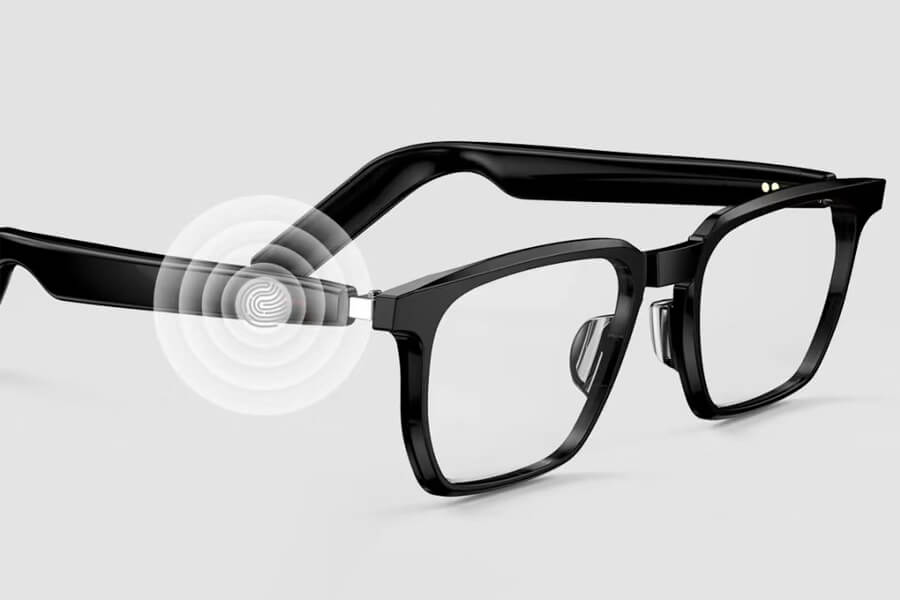
Modern eyewear is not just about vision correction; it’s also about providing comprehensive protection and functionality. Therefore, integrating modern functional elements into retro design is crucial.
| Modern Function | Application in Retro Design |
|---|---|
| Blue light protection | Combine classic frames with blue light filtering lenses |
| Smart features (e.g., Bluetooth) | Hide smart components within retro frames, maintain aesthetics |
For instance, today’s consumers are increasingly aware of the dangers of blue light, so we can incorporate blue light protection into retro eyewear. This not only enhances the product’s practicality but also ensures the retro design meets the needs of modern consumers.
Additionally, the advancement of modern technology offers us more design possibilities. For example, smart eyewear technology can be integrated into retro designs, creating eyewear that has a vintage look but also smart functionality.
Strategies for Combining Retro Elements with Modern Design
Now that we’ve explored the key elements of both retro and modern design, let’s discuss how to seamlessly blend the two.
Combining Materials and Technology

First, we can use modern technology to enhance the performance of retro materials. For instance, 3D printing technology can precisely replicate the texture of retro materials, while modern techniques can improve their durability and comfort.
| Material Improvement Strategy | Application Example |
|---|---|
| Anti-oxidation treatment | Apply anti-oxidation treatment to brass frames, maintaining their classic look while extending durability |
| Lightweight materials | Use lightweight alloys instead of traditional metals to enhance comfort |
Innovating with Colors and Patterns
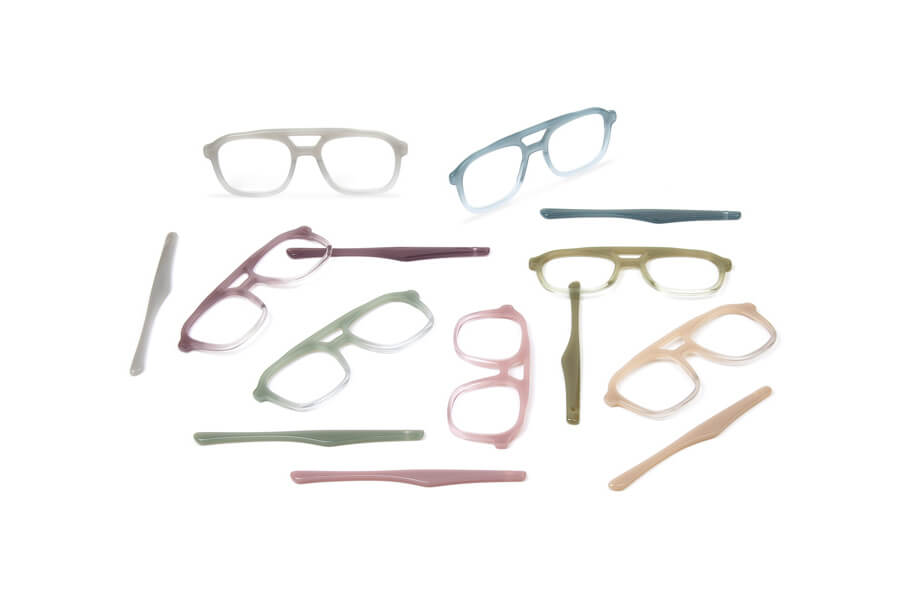
Next, we can use modern techniques to innovate the presentation of retro colors and patterns. While classic retro tones are timeless, they may seem outdated if not updated.
| Innovation Strategy | Application Effect |
|---|---|
| Digital printing technology | Achieve more detailed patterns and color effects through digital printing |
| Combining gradients with new patterns | Merge classic patterns with gradient colors to create a unique visual effect |
Integrating Modern Functions with Retro Styles

Finally, incorporating modern functions is essential. As mentioned earlier, we can integrate smart features and multifunctional designs into retro-style eyewear.
| Functionality Enhancement Strategy | Application in Retro Design |
|---|---|
| Interchangeable lenses | Design glasses with interchangeable lenses—use standard lenses during the day and switch to blue light filtering lenses at night |
| Smart health monitoring | Integrate health monitoring features into retro frames, providing health tracking while maintaining a vintage look |
Case Studies
To further illustrate, let’s look at several successful brand examples that have expertly combined retro elements with modern design.
| Brand | Design Characteristics | Success Factors |
|---|---|---|
| Ray-Ban | Classic Aviator frames combined with lightweight materials and UV protection lenses | Perfectly blends retro and modern technology |
| Warby Parker | Retro design using recycled materials, 3D printing, and custom services | Meets environmental demands and modern customization needs |
| Jacques Marie Mage (JMM) | Bold frames, intricate detailing, handcrafted with modern materials | Luxurious and nostalgic while offering comfort and durability |
| Persol | Iconic “arrow” detailing and Meflecto hinges, improved comfort through modern materials | Rich retro feel with excellent functionality and comfort |
| Moscot | Thick acetate frames, classic round lenses, finely handcrafted | Combines classic aesthetics with modern comfort, highly popular |
| Oliver Peoples | Understated luxury with retro design, combined with titanium and lightweight acetate | Unique retro charm with high-end materials |
| Cutler and Gross | Bold design with heavy frames, combining retro styles with modern materials | Distinctive personality, suitable for fashion enthusiasts |
| Thom Browne Eyewear | Retro design with modern luxury elements, using high-quality titanium | Fuses retro styles with modern luxury aesthetics |
| L.G.R | Retro style combined with Italian craftsmanship and modern materials | High-quality craftsmanship with excellent visual and functional performance |
| Cazal | Large frames, metal detailing, blending 1980s street culture elements with modern manufacturing | Bold design, symbolizing the fusion of retro and trendy |
The Market Outlook for Blending Retro and Modern Design
As consumers increasingly seek personalization and high quality, the market for eyewear that combines retro and modern design is broad. Today, more and more consumers want eyewear that expresses their individuality without sacrificing the convenience and comfort that modern technology provides.
Looking ahead, the fusion of retro and modern design will likely become more widespread. We may see more brands experimenting boldly, combining tradition with innovation to create stunning products. Whether through material innovation or functional integration, the blend of retro and modern design will become a major trend in eyewear design.
Designer Tips and Common Mistakes
When integrating retro elements with modern design, designers should keep the following tips in mind to avoid common design mistakes.
| Tip | Explanation |
|---|---|
| Maintain balance | Find the balance between retro and modern elements to avoid overemphasizing one aspect. |
| Focus on details | Retain necessary decorative details in minimalist designs to ensure the sophistication of retro style. |
| Listen to market feedback | Understand consumer preferences and needs, adjust design direction to ensure products meet market demands. |
Conclusion
In conclusion, the combination of retro style and modern design is both a challenge and an opportunity. By skillfully incorporating classic elements and blending them with modern design concepts and technology, designers can create eyewear that has both a sense of history and a modern fashion appeal. This not only attracts consumers looking for personalized products but also helps brands stand out in a competitive market.
Whether through the integration of materials and technology, innovative use of colors and patterns, or the fusion of functionality and style, combining retro and modern design opens up endless possibilities for eyewear design. We hope this article provides some inspiration for designers, encouraging you to create more iconic pieces in your future designs.
FAQ: Blending Retro and Modern Eyewear Design
Q1: What are the key benefits of incorporating retro elements into modern eyewear design?
A1: Incorporating retro elements into modern eyewear design allows designers to create products that appeal to a wide range of consumers. Retro designs evoke nostalgia and offer a timeless aesthetic, while modern features enhance functionality and comfort. This blend can attract both those who appreciate classic styles and those who seek the latest technology in their eyewear.
Q2: How can I ensure that retro eyewear designs remain relevant in the modern market?
A2: To keep retro designs relevant, it’s important to integrate contemporary materials and technologies, such as lightweight alloys, anti-reflective coatings, and smart features like blue light filters or Bluetooth connectivity. Updating the color palette and incorporating current trends can also help make retro designs feel fresh and appealing to modern consumers.
Q3: What are some common mistakes to avoid when combining retro and modern design elements?
A3: One common mistake is overemphasizing either the retro or the modern aspect, which can lead to a design that feels unbalanced. Another mistake is neglecting comfort and ergonomics in favor of style, which can result in eyewear that looks great but is uncomfortable to wear. It’s also important to avoid making the retro design elements too subtle, as this can dilute the nostalgic appeal.
Q4: How do I choose the right materials for retro-inspired eyewear?
A4: When choosing materials for retro-inspired eyewear, consider both the aesthetic and functional qualities. Traditional materials like acetate, wood, and metal (e.g., copper or brass) provide a classic look and feel. However, incorporating modern materials like lightweight alloys or hypoallergenic coatings can improve comfort and durability, making the eyewear more appealing to today’s consumers.
Q5: What are the most popular retro frame shapes, and how can they be modernized?
A5: Popular retro frame shapes include round, aviator, and cat-eye frames. These shapes can be modernized by adjusting the proportions, such as enlarging the frames or altering the curvature to better suit contemporary face shapes. Additionally, using modern materials and incorporating functional elements like spring hinges can add a modern touch while retaining the classic aesthetic.
Q6: How can I incorporate modern functionality into retro eyewear without compromising the vintage look?
A6: Modern functionality can be subtly integrated into retro eyewear by embedding smart features (e.g., health tracking, Bluetooth) within the frames or using lenses with advanced coatings (e.g., anti-glare, blue light protection). These features can be added in a way that maintains the vintage aesthetic, such as hiding technology within the temples or using minimalist designs for buttons and controls.
Q7: How can sustainability be factored into retro-modern eyewear designs?
A7: Sustainability can be incorporated by using eco-friendly materials such as recycled acetate or wood sourced from sustainable forests. Additionally, modern production techniques like 3D printing can reduce waste and allow for precise manufacturing, aligning with both retro aesthetics and modern environmental standards.
Q8: How do you balance between retaining the retro aesthetic and ensuring modern-day comfort in eyewear design?
A8: Balancing retro aesthetics with modern comfort involves careful design choices, such as using lightweight materials, ergonomic shaping, and adjustable components like nose pads and temples. This approach allows the eyewear to maintain a vintage look while offering the comfort expected by today’s consumers.
Q9: Are there specific color trends in retro-modern eyewear?
A9: Retro-modern eyewear often features classic colors like tortoiseshell, ebony, and horn, which are updated with modern twists like gradient effects or unexpected color combinations. These updates keep the color palettes relevant while maintaining a connection to the retro inspiration.
Q10: Can retro and modern elements be blended across different eyewear styles, such as sunglasses and optical frames?
A10: Yes, retro and modern elements can be successfully blended across various eyewear styles, including both sunglasses and optical frames. The key is to tailor the blend to the specific style—for example, using classic aviator shapes with polarized lenses for sunglasses, or combining cat-eye optical frames with lightweight, comfortable materials for everyday wear.

